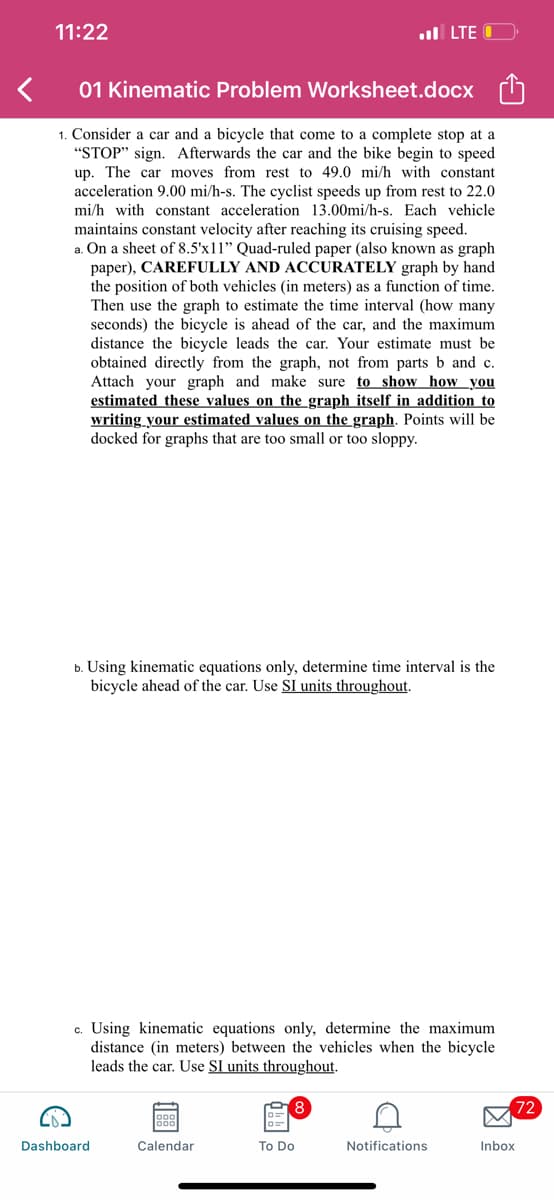1. Consider a car and a bicycle that come to a complete stop at a "STOP" sign. Afterwards the car and the bike begin to speed up. The car moves from rest to 49.0 mi/h with constant acceleration 9.00 mi/h-s. The cyclist speeds up from rest to 22.0 mi/h with constant acceleration 13.00mi/h-s. Each vehicle maintains constant velocity after reaching its cruising speed. a. On a sheet of 8.5'x11" Quad-ruled paper (also known as graph paper), CAREFULLY AND ACCURATELY graph by hand the position of both vehicles (in meters) as a function of time. Then use the graph to estimate the time interval (how many seconds) the bicycle is ahead of the car, and the maximum distance the bicycle leads the car. Your estimate must be obtained directly from the graph, not from parts b and c. Attach your graph and make sure to show how you estimated these values on the graph itself in addition to writing your estimated values on the graph. Points will be docked for graphs that are too small or too sloppy.
Displacement, Velocity and Acceleration
In classical mechanics, kinematics deals with the motion of a particle. It deals only with the position, velocity, acceleration, and displacement of a particle. It has no concern about the source of motion.
Linear Displacement
The term "displacement" refers to when something shifts away from its original "location," and "linear" refers to a straight line. As a result, “Linear Displacement” can be described as the movement of an object in a straight line along a single axis, for example, from side to side or up and down. Non-contact sensors such as LVDTs and other linear location sensors can calculate linear displacement. Non-contact sensors such as LVDTs and other linear location sensors can calculate linear displacement. Linear displacement is usually measured in millimeters or inches and may be positive or negative.

Trending now
This is a popular solution!
Step by step
Solved in 6 steps with 5 images







